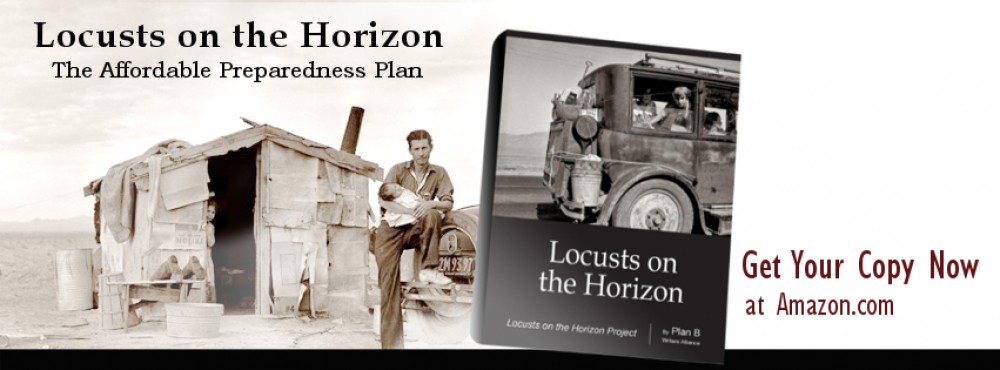By Plan B Writer’s Alliance – LocustsOnTheHorizon.com
(This is an excerpt from the book, ‘Locusts on the Horizon‘)
Jim was a travelling man, and he was free like few are.
Half White and half native Shoshone, Jim grew up in rural Idaho and he knew what freedom was. He also knew there was more to life than the rat race. When he turned 18 he was a natural for the US Army to recruit, so he volunteered and eventually wound up in the Republic of Vietnam with the Special Forces. After a particularly fierce fight with regulars from the North Vietnamese Army, Jim wound up back in the USA, with a permanent limp and missing an eye.
Twenty five years later, in the early 1990’s, Jim decided that he had enough of the daily grind, and he wanted to spend more time seeing America. He had been teaching survival courses and his students volunteered to help him make his travelling rig. Almost everything in the project was scavenged or bought second hand.
His gypsy wagon was an old Nissan pickup that had been rolled and the engine and transmission had already been salvaged from it. They took the crushed body off the frame and kept the hydraulic bake system and the parking brake intact. They made a wooden wagoner’s seat on the front with a wooden pedal for the brakes. They then used scavenged lumber and corrugated roofing metal to build a covered gypsy wagon on the old pickup frame.
Into the gypsy wagon they put an old woodstove, built a bed, and constructed storage areas, including a hidden, lockable compartment to store his guns. A deep cycle RV battery was put into its own wooden box, and hooked through a small regulator to a small solar panel. This powered an automotive cabin light inside the gypsy wagon, an old donated 40 channel CB, and a scavenged AM/FM car stereo. Mounted on the back of the gypsy wagon was a steel whip style CB antenna, and near the front was mounted a scavenged car radio antenna.
His ‘motor’ was a team of three burros, harnessed side by side. The harnesses were made from old, discarded fire hoses. The rig rolled on old castoff car tires that wouldn’t have lasted 20 minutes at road speeds on an automobile, but at burro speeds, they were good pretty much indefinitely. The three burros were strong enough together that if they didn’t feel like stopping, and sometimes they didn’t, they could tow the entire rig with the brakes locked and the tires skidding.
A small trailer using bicycle rims and tires was made and was towed behind the gypsy wagon. The entire small trailer was a chicken coop for small bantam chickens. On top of the chicken coop, Jim kept a container of chicken feed and a couple of bales of hay for the burros for when grazing was sparse, such as when they took a break alongside a desert road.
So, at the breathtaking speed of three miles per hour, Jim saw America, lived the life, met people wherever he went, and had more than one argument with the highway patrol, mostly about travelling alongside the shoulder of the road on the interstate.
The last we saw Jim, it was 4th of July, 1994, and he was camped out near the base of Kachina Peaks, just outside of Flagstaff, Arizona. His goal was to head back to where he grew up, on the Salmon River in Idaho. His guess was it was going to take three months, more or less. He wasn’t in a hurry, because the journey is what mattered, and the destination was just part of that.
